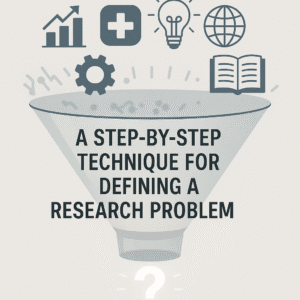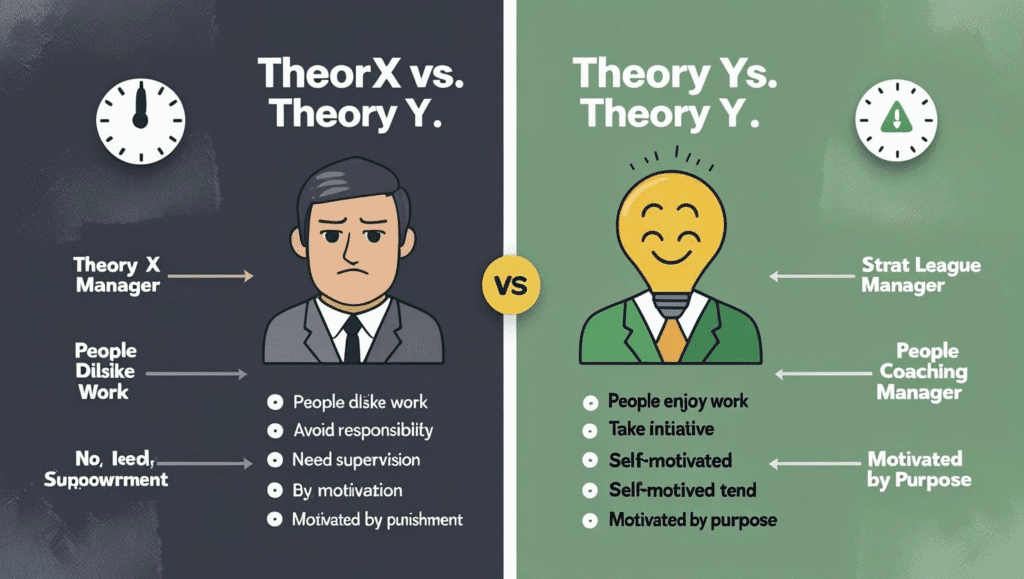A Step-by-Step Technique for Defining a Research Problem
For many graduate students and junior researchers, the journey from a broad topic of interest to a sharp, focused, and researchable problem is the most challenging part of a project. This article provides a practical, 5-step technique that acts as a funnel, systematically guiding you from a general idea to a well-defined problem statement ready for investigation.
A Practical Example: From Vaping to a Viable Project
To illustrate this technique, we’ll follow the process of a fictional graduate student in public health at a US university. Her broad topic of interest is “vaping among American teenagers.”
-
Step 1: Identify a Broad Area of Interest
Start with a subject that genuinely fascinates you. Your research will be a long-term commitment, so your passion and curiosity are the fuel that will sustain you. At this stage, the topic can be very general.
Example: The student is passionate about public health and is concerned by news reports about the rise of e-cigarette use among young people. Her broad area is identified: “vaping among American high school students.” -
Step 2: Dissect the Broad Area into Sub-Areas
A broad topic is not a research problem. The next step is to break it down into smaller, more specific components. Think about the different facets, issues, and populations related to your topic. Mind mapping is an excellent tool for this stage.
Example: The student dissects “vaping” into several sub-areas:- Health effects of long-term vaping.
- Social influences (peer pressure, social media trends).
- Marketing tactics used by vape companies.
- The effectiveness of school-based prevention programs.
- Psychological factors (stress, anxiety as triggers).
-
Step 3: Select a Specific Sub-Area of Focus
From your list of sub-areas, choose the one that is most compelling to you. Critically, you must also consider feasibility. Do you have the skills, resources, and access to data/participants required to investigate this specific area? This is where your broad interest begins to narrow into a viable project.
Example: While the health effects are important, a long-term study is not feasible for her master’s thesis. However, she has connections with local school districts, making the sub-area of “the effectiveness of school-based prevention programs” both interesting and highly feasible. -
Step 4: Raise Research Questions
Now, within your chosen sub-area, begin to ask specific, probing questions. These questions will guide your literature review and start to shape your methodology. Use interrogative words like “What,” “How,” “Why,” and “To what extent” to formulate your inquiries.
Example: The student starts asking key questions:- What types of anti-vaping programs are most commonly used in US high schools today?
- How do students perceive the effectiveness of these different programs?
- Is there a measurable difference in vaping intentions between students who experience a fear-based program versus a peer-led educational program?
-
Step 5: Formulate the Problem Statement
The final step is to refine your most important research question(s) into a formal, declarative problem statement. A good problem statement is a clear, concise sentence or two that articulates the variables you’ll be studying, the specific population you’re interested in, and the overall objective of your research.
Example: The student synthesizes her questions into a final, well-defined research problem: “This study aims to evaluate and compare the perceived effectiveness of two common anti-vaping prevention strategies—fear-based messaging versus peer-led educational workshops—on the self-reported attitudes and behavioral intentions towards vaping among 10th-grade students in the Chicago public school system.”
Conclusion: From Curiosity to Clarity
This five-step technique provides a logical funnel to channel your broad curiosity into a specific, researchable, and significant problem. By moving from a general interest to sub-areas, selecting a focus, asking critical questions, and finally formulating a precise statement, you build a strong foundation for your entire research project. This methodical approach is the key to transforming a simple idea into a study capable of producing clear and impactful results.
Frequently Asked Questions
This is a very common and important realization in the research process. If you determine a sub-area isn’t feasible (due to cost, time, or access to data), you must go back to Step 3 and select a different sub-area from your list. Feasibility is just as important as interest. It’s better to conduct a successful, smaller-scale study than to fail at an overly ambitious one.
Typically, a research project will have one primary, overarching research question that stems directly from the problem statement. You might then have two to four secondary, more specific questions that break down the primary question into manageable parts. Having too many questions can make your study unfocused and overly complex.
The “Statement of the Problem” is a formal section in the introduction of a research paper, thesis, or dissertation. It’s where you present the well-defined research problem that you formulated using the technique described above. It typically includes the context of the problem, highlights the gap in current knowledge, and clearly states the purpose and objective of your study.


